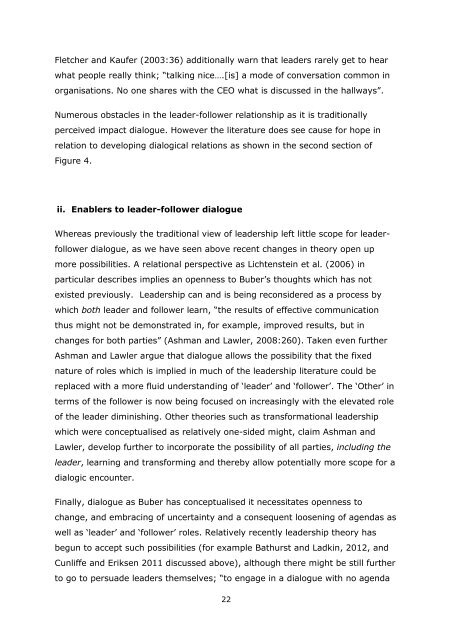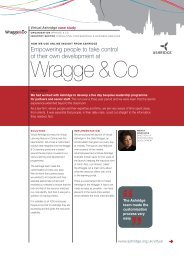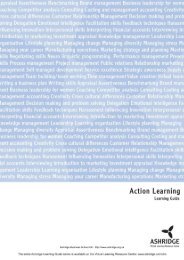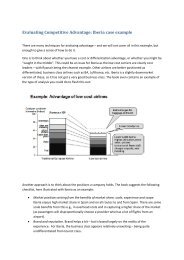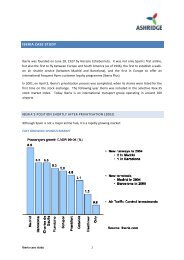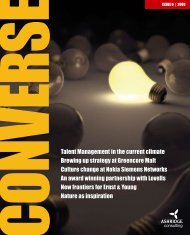“Dialogue – possible between leader and follower?” - Ashridge
“Dialogue – possible between leader and follower?” - Ashridge
“Dialogue – possible between leader and follower?” - Ashridge
Create successful ePaper yourself
Turn your PDF publications into a flip-book with our unique Google optimized e-Paper software.
Fletcher <strong>and</strong> Kaufer (2003:36) additionally warn that <strong>leader</strong>s rarely get to hear<br />
what people really think; “talking nice….[is] a mode of conversation common in<br />
organisations. No one shares with the CEO what is discussed in the hallways<strong>”</strong>.<br />
Numerous obstacles in the <strong>leader</strong>-<strong>follower</strong> relationship as it is traditionally<br />
perceived impact dialogue. However the literature does see cause for hope in<br />
relation to developing dialogical relations as shown in the second section of<br />
Figure 4.<br />
ii. Enablers to <strong>leader</strong>-<strong>follower</strong> dialogue<br />
Whereas previously the traditional view of <strong>leader</strong>ship left little scope for <strong>leader</strong>-<br />
<strong>follower</strong> dialogue, as we have seen above recent changes in theory open up<br />
more possibilities. A relational perspective as Lichtenstein et al. (2006) in<br />
particular describes implies an openness to Buber’s thoughts which has not<br />
existed previously. Leadership can <strong>and</strong> is being reconsidered as a process by<br />
which both <strong>leader</strong> <strong>and</strong> <strong>follower</strong> learn, “the results of effective communication<br />
thus might not be demonstrated in, for example, improved results, but in<br />
changes for both parties<strong>”</strong> (Ashman <strong>and</strong> Lawler, 2008:260). Taken even further<br />
Ashman <strong>and</strong> Lawler argue that dialogue allows the possibility that the fixed<br />
nature of roles which is implied in much of the <strong>leader</strong>ship literature could be<br />
replaced with a more fluid underst<strong>and</strong>ing of ‘<strong>leader</strong>’ <strong>and</strong> ‘<strong>follower</strong>’. The ‘Other’ in<br />
terms of the <strong>follower</strong> is now being focused on increasingly with the elevated role<br />
of the <strong>leader</strong> diminishing. Other theories such as transformational <strong>leader</strong>ship<br />
which were conceptualised as relatively one-sided might, claim Ashman <strong>and</strong><br />
Lawler, develop further to incorporate the possibility of all parties, including the<br />
<strong>leader</strong>, learning <strong>and</strong> transforming <strong>and</strong> thereby allow potentially more scope for a<br />
dialogic encounter.<br />
Finally, dialogue as Buber has conceptualised it necessitates openness to<br />
change, <strong>and</strong> embracing of uncertainty <strong>and</strong> a consequent loosening of agendas as<br />
well as ‘<strong>leader</strong>’ <strong>and</strong> ‘<strong>follower</strong>’ roles. Relatively recently <strong>leader</strong>ship theory has<br />
begun to accept such possibilities (for example Bathurst <strong>and</strong> Ladkin, 2012, <strong>and</strong><br />
Cunliffe <strong>and</strong> Eriksen 2011 discussed above), although there might be still further<br />
to go to persuade <strong>leader</strong>s themselves; “to engage in a dialogue with no agenda<br />
22


